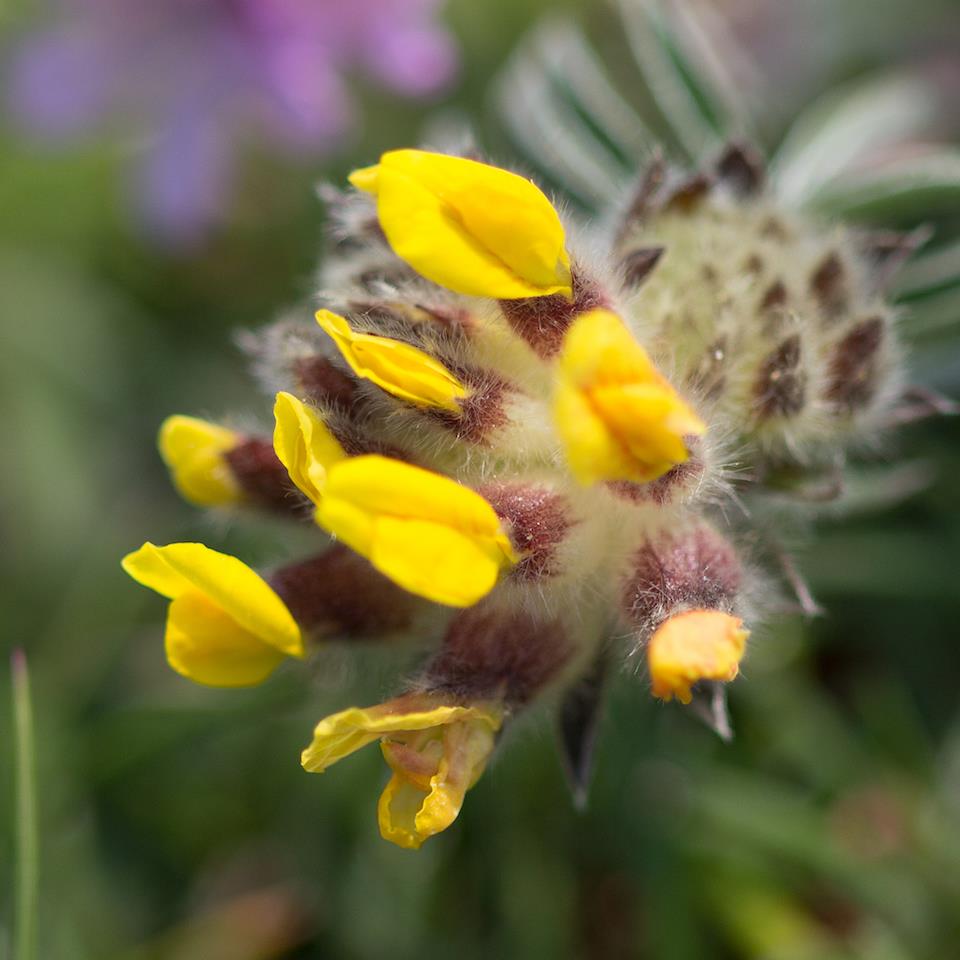
The books say Kidney Vetch blooms from June, but this is The Lizard, so it flowers from May. Look out for it on cliff tops and sand dunes from late spring through into summer.
Photo: Amanda Scott
Scientific name: Anthyllis vulneraria
Other common names: Granny’s Pin-cushions, Lady’s Slipper, Lady’s Fingers, Woundwort, Butter Fingers, Lamb’s-foot
What to look for:
• Family: Fabaceae (Pea family)
• Flowers: Flowerheads up to 4cm across, comprising many individual, usually yellow-petalled flowers (other colours can occur, especially red and orange). The petals turn orange-brown as they fade. Calyx tubes are visible hairy looking, making the flowerhead look woolly.
• Leaves and stem: Pinnate leaves are white and silky below, green above.
• Height: Up to 30 cm tall.
• Where: Sea cliffs and dunes, and on calcareous grassland.
• When: Flowers from June to November.
• Habit: Upright to prostrate.
It’s all too easy to ignore Kidney Vetch, regarding its yellow-orange flowers only as a foil to the pinks and lilacs of Thrift and Spring Squill on the cliff tops.
This, however, is an adorable little fluff of a plant. Take a closer look, and you will see that the flowerhead – made up of several individual flowers – has a distinctly woolly appearance. This is because of the silky hairs on the calyx tubes behind the petals.
It’s a feisty little plant as well. If there’s a patch of bare ground, it will go ahead and quickly colonise it.
Kidney Vetch is mainly found at coastal sites – on cliff tops and sand dunes – but you can also find it inland, on neutral to calcareous meadows, waste ground and roadsides. There are several sub-species. In Cornwall, you might spot one of these – ssp. coccinea – which has red flowers.

Did you know…?
…Kidney Vetch is the foodplant for caterpillars of the Small Blue butterfly, the smallest butterfly in Britain. It is also a foodplant for a few moths, including the Grass Eggar and Hairy Footman.
…The species name vulneraria is derived from the Latin for wound healing, a reference to its use in traditional medicine for treating wounds and swelling. At one time, the kidney shape of its flowers meant people believed it could be used to treat kidney complaints.

More information and references:
Mabey, R., 1997. Flora Britannica. Chatto & Windus, London.
Rose, F. and O’Reilly, C., 2006. The Wild Flower Key, 2nd edition. Frederick Warne, London.
Stace, C., 2010. New Flora of the British Isles, 3rd edition. Cambridge University Press, Cambridge.
Published: May 2016
Author: Amanda Scott
Photos: Amanda Scott
